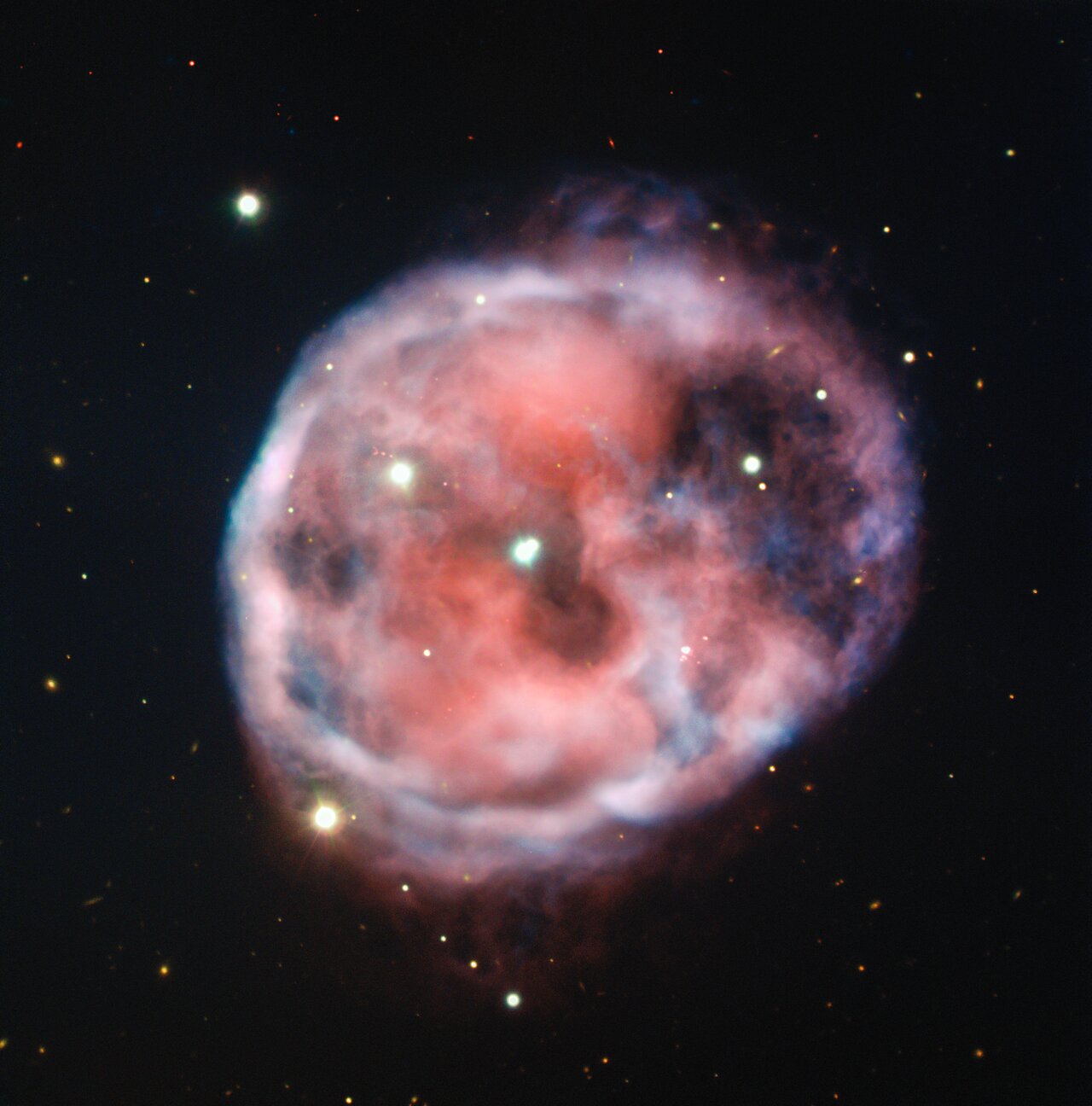Just in time for Halloween, the European Southern Observatory (ESO) has released an image of a spooky structure known as the Skull Nebula. This nebula, situated deep in the belly of The Whale constellation (Cetus), is located around 1,600 light-years from Earth. But the nebula is not only thematically appropriate for this weekend, but it is also notable for its unusual configuration of two closely bound stars being orbited by a third more distant star.

A planetary nebula like this is formed when a star approaches the end of its life and throws off its outer layers in a dramatic explosion. These outer layers form a bubble around the star, which is reduced to a white dwarf. In the case of the Skull Nebula, the white dwarf remains at the very center of the nebula, where it also orbits around a companion star, a red dwarf. You can’t see the red dwarf in the image as it is too faint, but it is relatively close to the white dwarf, at just 500 times the distance between Earth and the sun.
In addition to this pair of stars at the heart of the nebula, there is also a third star orbiting the pair at a distance of around 1,900 times the distance between the Earth and the sun. This makes the Skull Nebula the first planetary nebula discovered with a hierarchical triple stellar system at its heart.
The image was captured using the ESO’s Very Large Telescope, which is located in the Atacama Desert in Chile. It was taken using the telescope’s FORS 2 instrument, the FOcal Reducer and low dispersion Spectrograph.
“This new image of the Skull Nebula intentionally captures light emitted in some narrow ranges of wavelengths — those associated with hydrogen and oxygen gas,” ESO writes. “Observations of light emitted by particular elements help reveal a wealth of information about an object’s chemical and structural compositions. This new image of the Skull Nebula highlights where NGC 246 is rich or poor in hydrogen (shown in red) and oxygen (depicted in light blue).”



